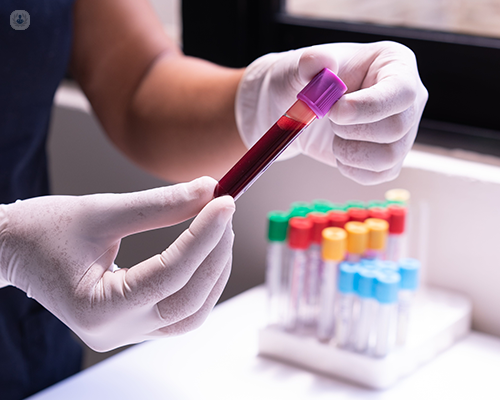Copper
What is analysed?
Copper is an essential mineral that plays an important role in the regulation of iron metabolism, the formation of connective tissue, the maintenance of the nervous system, and the production of melanin.
The copper test measures the level of copper in the blood, urine, or liver.

What does the result mean?
The result indicates the concentration of copper in a sample.
Why conduct the analysis?
The copper test is conducted to help detect copper deficiency or excess, and to diagnose Wilson’s disease.
When to conduct the analysis?
The copper test is conducted when Wilson’s disease is suspected, or when symptoms of copper deficiency or excess such as jaundice, fatigue, abdominal pain are observed.
What sample is required?
A blood sample and a 24-hours urine sample is required. Sometimes, a liver biopsy may also be performed.
Is any prior preparation necessary?
Patients should fast for 12 hours before the blood sample is taken. In addition, patients should also inform a healthcare professional about any medications being taken, as they could affect results.
No special preparation is required for the urine sample or the liver biopsy.
How is it performed?
The sample is sent to a laboratory, where it is analysed using atomic absorption spectroscopy or inductively coupled plasma mass spectrometry techniques quantify copper levels.
Based on the results of the sample, a liver biopsy may be performed to assess the amount of copper in the liver, in which a small tissue sample is obtained.
What are the normal values?
| Parameter | Normal range |
|---|---|
| Blood (serum) copper | 70 to 140 micrograms per decilitre (mcg/dL) |
| 11 to 22 micromoles per litre (µmol/L) | |
| Urine copper | Less than 40 micrograms per 24 hours |
| Liver copper | 20 to 50 micrograms per gram of liver tissue |
What does having altered values mean?
- Wilson’s disease: Low blood copper levels and elevated urine copper levels.
- Copper deficiency: Low blood copper levels and low urine copper levels indicate.
- Copper excess: High copper levels in the blood and urine indicate an excess of copper, suggesting conditions like chronic liver disease or acute hepatitis.